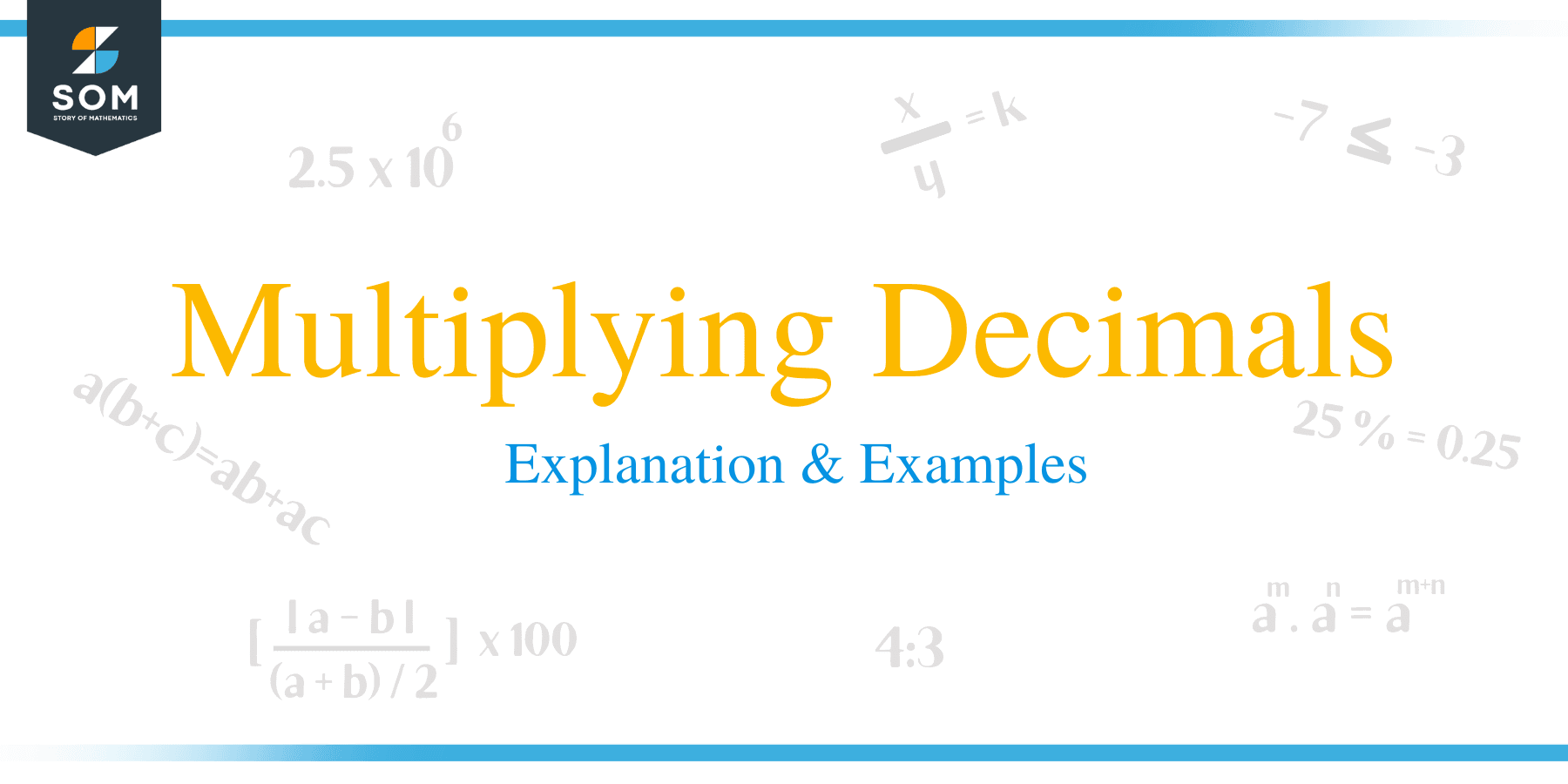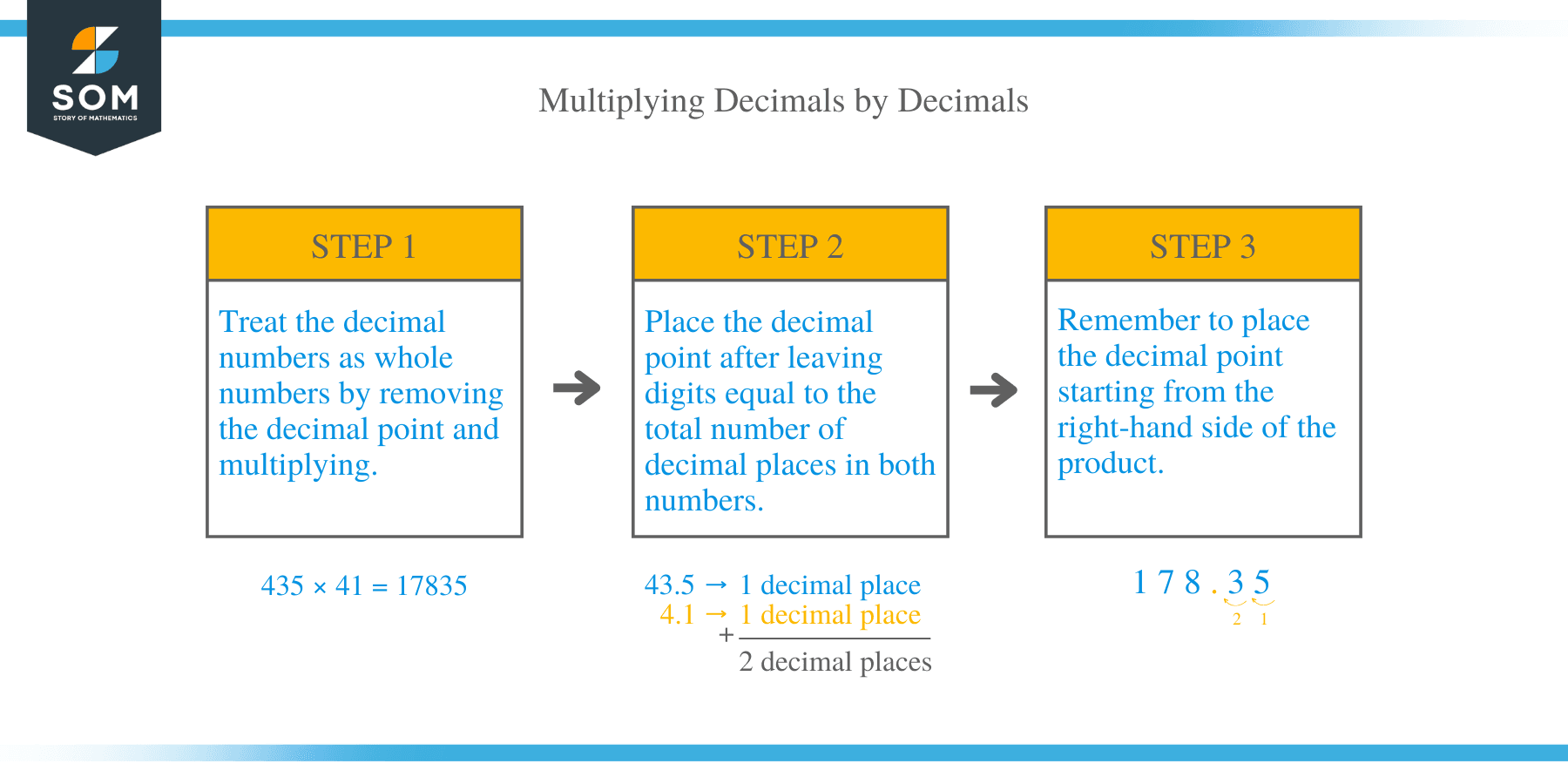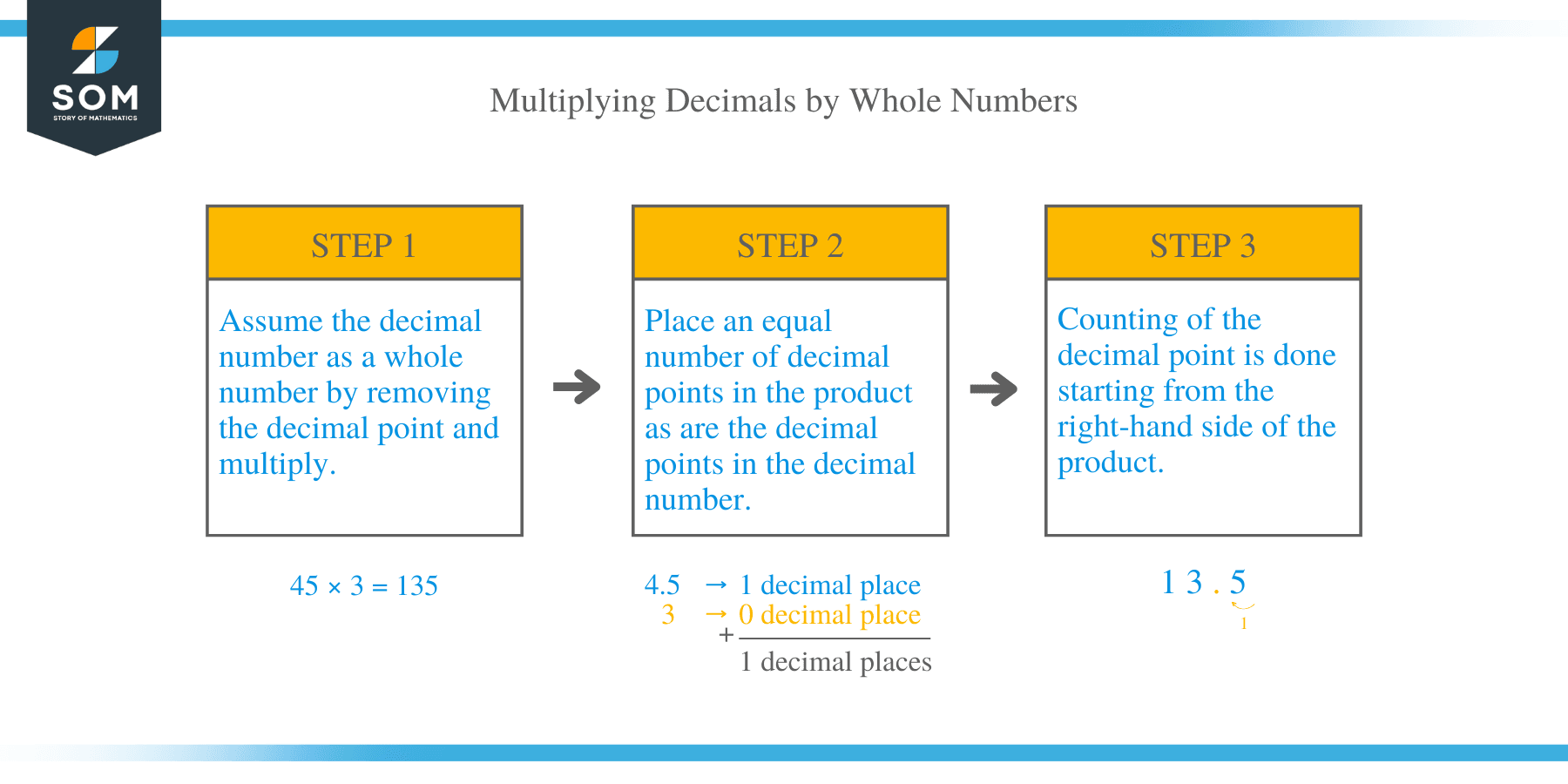- Home
- >
- Multiplying Decimals – Explanation & Examples
JUMP TO TOPIC
Multiplying Decimals – Explanation & Examples
 How to Multiply Decimals?
How to Multiply Decimals?
In this article, we will learn how to carry out multiplication of two decimals as well as multiplication of a decimal number and a whole number. Multiplication of decimal numbers is closely similar to multiplication of integers or whole numbers. There different rules of multiplications of decimals numbers .and whole numbers. Let’s take a look at the rules of multiplying of decimals.
Multiplying Decimals by Decimals
- Treat the decimal numbers as whole numbers by removing the decimal point and multiply.
- Place the decimal point after leaving digits equal to the total number of decimal places in both numbers.
- Remember to place the decimal point starting from the right-hand side of the product.
Example 1
Multiply: 43.5 × 4.1
- First, perform the multiplication ignoring decimal point.
- Treat the decimals as whole numbers: 435 × 41 = 17835
- Now insert the decimal point in the product (17835) to get as many decimal places in the product as there are in the multiplicands.
- In this case each multiplicand contains one decimal place, and so the total number of decimal places is two. Therefore, place two decimal in the product.
- Therefore, 43.5 × 4.1=178.35

Example 2
Find 81.32 × 8.3
- Treat the decimal numbers as whole numbers and multiply.
- 8132 × 83 = 674956
- In this example, the total number of decimal places in the multiplicands are 3. The decimal number 81.32 contains 2 decimal places and 8.3 contains 1 decimal place. Therefore, the sum of the decimal places in both numbers is 3.
- Place the same number of decimal places in the product as in the totals of multiplicands. Start counting from the right of the product.
- Therefore, 81.32 × 8.3 = 674.956
Multiplying Decimals by Whole Numbers
The rules of multiplying a decimal number and a whole number are similar to the rules for multiplying decimals only. The only difference in this case is that, one of the multiplicands is a whole number. These are some of the rules:
- Assume the decimal number as a whole number by removing the decimal point and multiply.
- Place an equal number of decimal points in the product as are the decimal points in the decimal number.
- Counting of the decimal point is done starting from the right-hand side of the product.
Example 3
Calculate 4.5 × 3
- Carryout the multiplication by ignoring the decimal point.
- 45 × 3 = 135
- Place in product an equal number of decimal points as are in the decimal number. Here, the number of decimal places is 1,
- Therefore, 4.5 × 3 = 13.5

Example 4
Find the product of 91.3012 and 83.
- Perform the multiplication operation by ignoring the decimal point.
- 913012 x 83 =
- Place the same number of decimal places as are in the decimal number. Here, the decimal number contains 4 decimal places, and therefore, the product will also contain 4 decimal places.
- The answer is, 7577.9996
Properties of Multiplication of Decimal Numbers
- The product of two decimal numbers remains the same, even if the order of multiplication is changed. For example: 4 × 0.8 = 0.8 × 1.4 = 1.12 and
- The product of a decimal number and 1 is the decimal number itself. For example:
2.519 × 1 = 2.519
- The product of a decimal number with zero is zero. For example: 008 × 0 = 0
- In multiplication of decimal numbers, the order of the groupings can be changed without changing product. For instance:02 × (11.2 × 2.3) = (1.02 × 2.3) × 11.2.
- The product of a whole number and decimal number remains the same when the numbers are multiplied in any order. For example: 1.8 × 11 = 11 × 1.8 = 19.8.


